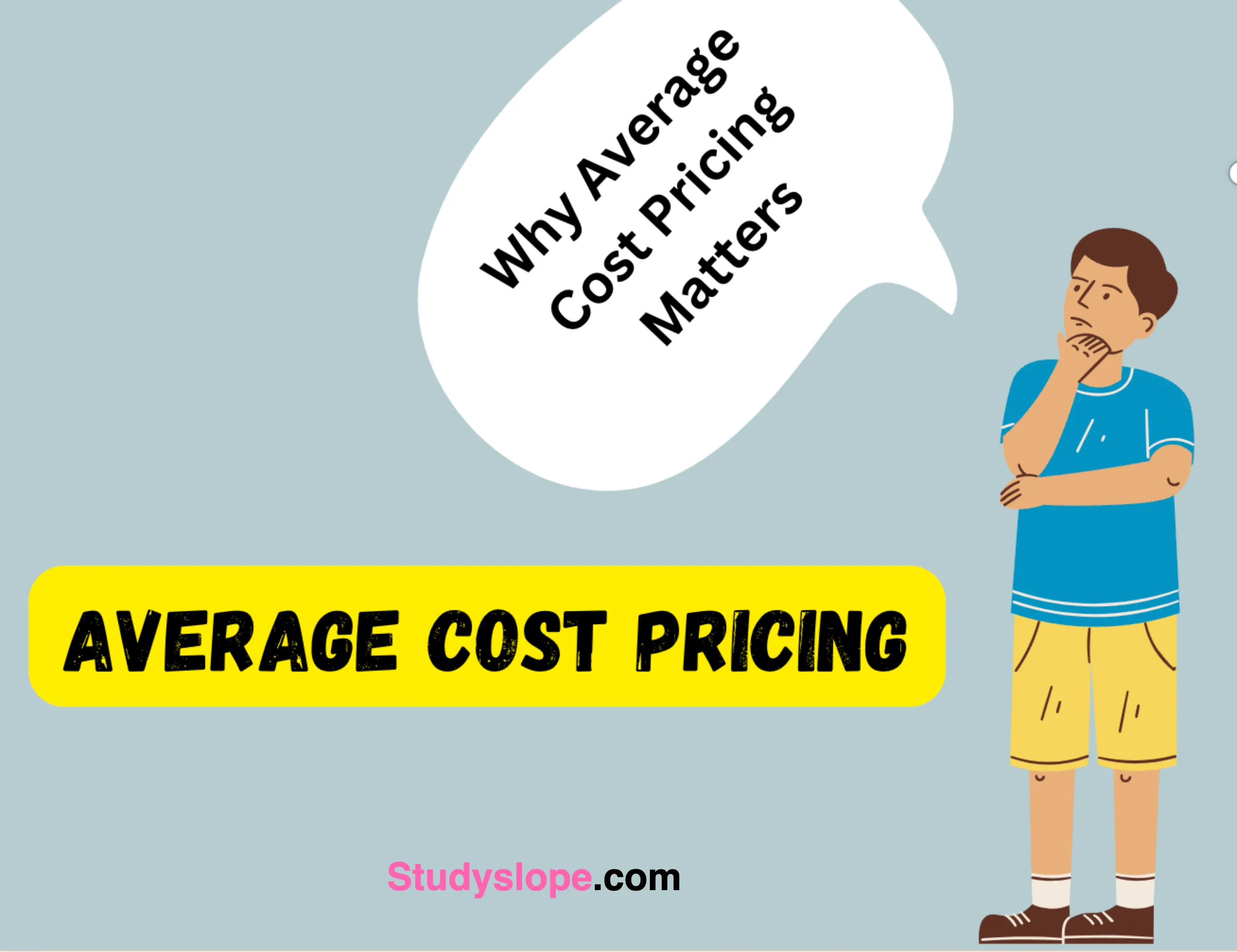Table of Contents
Definition of Average Cost Pricing
Average cost pricing refers to a pricing strategy where the price of a product or service is set based on the average cost of producing or providing it.Average cost pricing is a business technique where the price of a product is determined by adding a markup to the average cost of producing each unit.
The average cost encompasses both fixed and variable expenses linked to the manufacturing of a product, which is then divided by the total amount of items produced. The objective of this pricing plan is to encompass all manufacturing expenses, together with a justifiable profit margin.
Example
Let’s examine a food business that specialises in crafting artisan bread. In order to determine the average cost price of a loaf of bread, the bakery adds up all of its monthly expenditures, which encompass rent ($2000), utilities ($300), supplies ($700), and workers ($3000), resulting in a total of $6000. The average cost per loaf of bread produced by the bakery is $2, calculated by dividing the total cost of $6000 by the number of loaves, which is 3000. To achieve a 50% markup and guarantee a profit, the bakery would set the price of each loaf at $3, which is calculated by multiplying the average cost of $2 by a factor of 1.5.
Why Average Cost Pricing Matters
Implementing average cost pricing is essential for businesses as it guarantees that all manufacturing expenses are included in the product’s price, thereby ensuring the long-term viability of the firm. The use of this pricing methodology is of utmost significance for enterprises operating in fiercely competitive marketplaces, as setting prices excessively high may result in a decline in sales, while setting prices excessively low may lead to financial losses.
It allows for an equitable return on investment while also guaranteeing competitiveness in the market. Furthermore, this method offers a convenient and direct means of determining costs, particularly for newly introduced items or enterprises aiming to establish their presence.
Frequently Asked Questions (FAQ)
How can organisations modify their average cost pricing in response to fluctuating market conditions or costs?
Reassess Expenses: Organisations may modify their prices by conducting an assessment of their overall expenditures.
Adjust Profit Margins: Companies may raise prices in response to an increase in production costs or decrease them in response to market conditions that necessitate competitiveness or when production becomes more efficient.
What Are the Limitations of Using Average Cost Pricing?
Ignores Demand Sensitivity: It fails to consider the impact of price fluctuations on demand (price elasticity).
Neglects Competitors’ Prices: If competitors establish reduced prices, it may result in uncompetitive pricing.
Investment Restrictions: A company’s capacity to invest in innovation or development may be impeded by the solitary focus on cost coverage and the addition of a markup.
Is average cost pricing appropriate for both products and services?
Certainly: By calculating the average cost of providing the service, which includes wages and utilities, and subsequently adding a profit margin, it can be applied to services.
Market factors must be taken into account by service providers, who, similar to product vendors, must establish prices based on perceived value, competition, and demand.
Is average cost pricing appropriate for all types of businesses?
Not Always: It may not be suitable for luxury brands that prioritise brand prestige or for companies in industries that are subject to rapid change, where value-based pricing more accurately reflects the distinctive value they offer.
Strategic Fit: Businesses must select pricing strategies that are consistent with their market positioning and overarching objectives.
Also View: Price Elasticity of Demand

